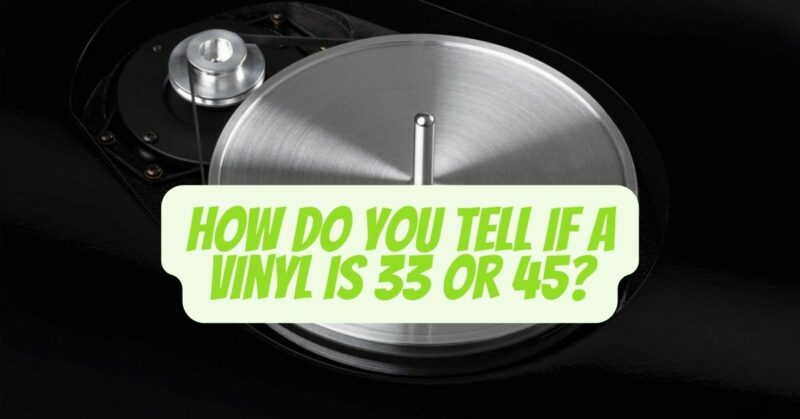Vinyl records have witnessed a resurgence in popularity, appealing to both audiophiles and music enthusiasts. However, one aspect that often perplexes collectors and newcomers alike is the differentiation between the two most common vinyl speeds: 33 revolutions per minute (RPM) and 45 RPM. Understanding how to identify the correct speed of a vinyl record is crucial for an optimal listening experience. In this article, we’ll delve into methods to distinguish between 33 RPM and 45 RPM vinyl records.
1. Examine the Record Label: A straightforward way to ascertain the record’s speed is by examining the record label itself. Look for indications like “33 RPM,” “33 1/3 RPM,” or “45 RPM” printed on the label. This information is typically positioned near the center hole of the record.
2. Inspect the Runout Groove: The runout groove area near the center of the vinyl can often reveal clues about the record’s speed. Some records have numbers or symbols etched into this area, indicating the correct RPM. Keep an eye out for “33” or “45” markings.
3. Consult the Record Sleeve or Jacket: If the vinyl is stored in its original sleeve or jacket, check for speed information on the cover or inner sleeve. Many record sleeves provide a label specifying the appropriate speed for playback.
4. Utilize a Stylus Speed Gauge: For a precise determination of the speed, consider using a stylus speed gauge. These devices are designed to measure the rotation speed of the record as it plays. Simply place the gauge on the spinning vinyl, and it will provide an accurate reading of the RPM.
5. Listen to the Playback: In some cases, you can identify the speed by listening to the playback. A 33 RPM record typically plays at a slower speed with a lower pitch, while a 45 RPM record plays faster and produces a higher pitch. However, this method may not always be foolproof, as certain records are intentionally designed for creative pitch variations.
6. Observe the Label Color: Occasionally, the color of the label can offer a hint regarding the record’s speed. Although not infallible, some record labels use color-coding to signify different speeds. For instance, a red label may indicate 33 RPM, while a blue label could signify 45 RPM.
7. Refer to the Catalog Number: Catalog numbers on the record or its sleeve may include clues about the speed. Specific record labels incorporate the speed into the catalog number, providing a convenient reference.
8. Utilize Online Resources: If you encounter difficulties determining the speed of a particular vinyl record, numerous online resources and discography databases can assist you. These platforms offer information on various releases, allowing you to search for details about your specific record.
In conclusion, correctly identifying the speed of a vinyl record, whether it’s 33 RPM or 45 RPM, is essential for optimal playback and maintaining the integrity of your vinyl collection. By employing the methods outlined above and paying attention to the information available on the record label and packaging, you can confidently enjoy your vinyl records at the appropriate speed and relish the distinctive analog sound they deliver.

